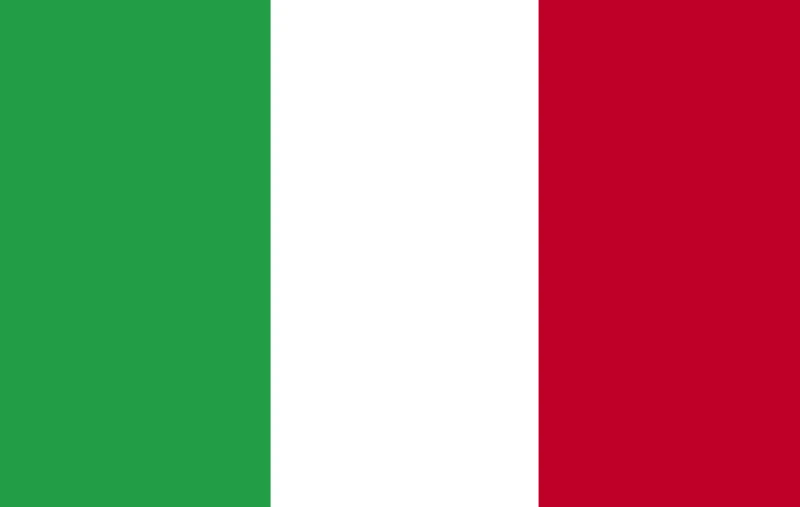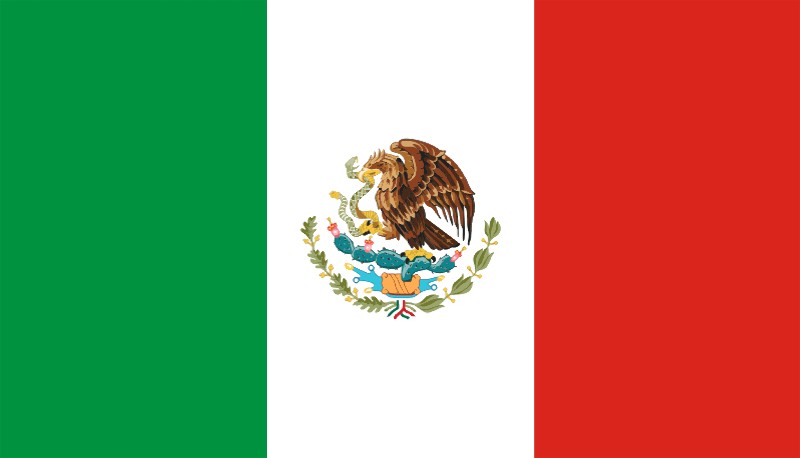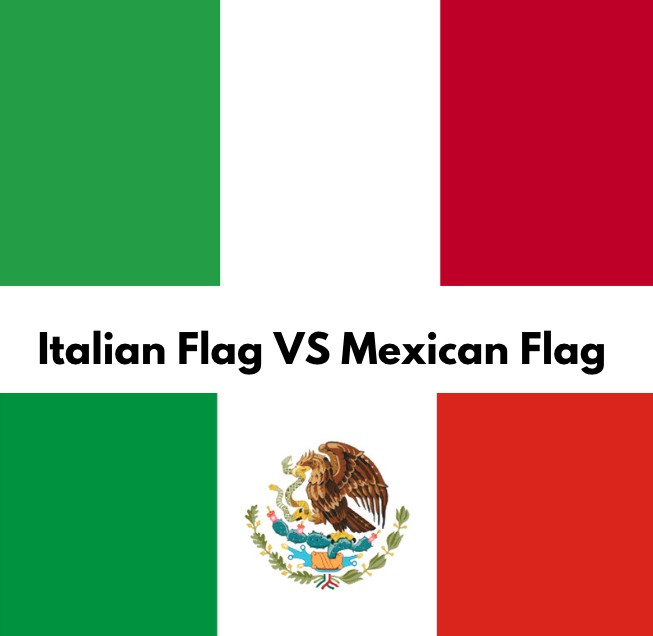The Mexican flag and Italian flag are so similar, and even some politicians have been confused!
So, what exactly are the differences and similarities between these 2 flags? Is there a reason that the Mexican and Italian flags are so similar? And what is the symbolism behind each flag? Read on to find out.
Italian Flag and Mexican Flag Similarities and Differences
It is very easy to spot the similarities between the Italian and Mexican flags – they are both tri-color flags with vertical stripes of green, white, and red from left to right. So how do we actually tell them apart?
Colors of Each Flag
As we have said, both flags consist of 3 vertical stripes in green, white, and red, but if you look closely, the shades of green and red are quite different from one another. The Italian flag has much lighter shades of each color, while the Mexican flag’s colors are in darker shades.
Ratios of Each Flag
Each flag also has its own shape or ratio, with the Italian flag having a 2:3 ratio (the length is one and a half times the height) and the Mexican flag having a ratio of 4:7. To put this more simply, if you had an Italian flag that was 20 inches tall, it would be 30 inches long, and if you had a Mexican flag that was 20 inches tall, it would be 35 inches long.
This means that your Italian flag would look a little more square than your Mexican flag, which would be more rectangular in shape. So when putting the two flags side by side, you should easily be able to see the differences in color and shape. But there’s one more big difference between the two flags, and that is the coat of arms on the Mexican flag.
The Italian flag has no symbol in the white stripe, or anywhere else on the flag, although it did have one long ago. The Mexican flag has the Mexican coat of arms in the center of the white stripe – an eagle with a snake in its beak and talons, perched on a prickly pear plant.
Symbolism of Each Flag
Most national flags are designed with some meaning or significance, and the colors are carefully chosen to represent specific things.
Italian Flag Meaning

In the case of the Italian flag, nobody seems to be entirely sure of what the colors mean, but there are a few theories.
- The colors of the Italian flag could represent Italy itself – green for the rolling hills, white for the snowy peaks of the Alps, and red for the blood of Italy’s people, shed over the country’s history.
- Or, they could have a more idealistic meaning, representing freedom (green), purity and faith (white), and love (red).
- Or, their meaning could be religious, representing the virtues of hope, faith, and charity.
Since there is no confirmation of which one of these is correct, you can choose which one you like best. I like to believe that the first one is the right option, as Italy does have some of the most beautiful landscapes in the world.
Mexican Flag Meaning

The Mexican flag’s meaning is a little more clear, probably due to their long fight for freedom from the Spanish. Historically, the green represented Mexico’s independence and white was for the most prevalent religion – Catholicism. Now, the green symbolizes hope and the white is for unity.
The meaning of the red has never changed – it has always been a symbol of the blood spilled by the Mexican people in their fight for independence from Spain.
Coat of Arms
The Mexican coat of arms in the center of their flag’s white stripe has an interesting history and symbolism that makes it a fun flag to learn about.
There is an old legend about how Mexico City began in the year 1325, though it was first called Tenochtitlan. The story tells us that the Aztec people left their homeland, Aztlan, when their god, Huitzilopochtli, promised them a better place.
He told them that they would know where they should build their city when they saw an eagle eating a rattlesnake on a prickly pear plant.
They saw the eagle on an island in Lake Texcoco, and began to build their city there. It soon became the capital city of the Aztec empire, spreading across the lake on a series of man-made islands.
Sadly, 200 years later, the Aztecs were conquered by the Spanish conquistadores and their allies. The Spanish soon began the construction of Mexico City in the same place after the destruction of most of Tenochtitlan, eventually draining the lake to create dry land for the growing metropolis.
Why Are the Italian Flag and Mexican Flag So Similar?
Many sources will say that the similarities between the Italian and Mexican flags are pure coincidence, since there are similarities between many of the world’s flags, but that may not be true. After all, Spain and Italy are quite close to each other geographically, and Spain colonized Mexico for 300 years.
It is possible that both the Italian and Mexican flags were inspired by the French tri-color flag of blue, white, and red, which was established in 1794. Both the Mexican and Italian tri-color flags were created shortly after this – the Italian in 1797 and the Mexican in 1821. I think these dates are far too close together to be pure coincidence.
Both flags have gone through some significant changes over the years, before becoming the symbols we see today. And despite their similarities, each flag holds its own meaning for the citizens of the country it represents. That’s why it is important for us to know the difference between the flags of these two proud countries.
Conclusion
Despite their similar color schemes, the Mexican and Italian flags actually have very little in common. Their colors are different shades – Italy’s colors are lighter and Mexico’s darker, their ratios are different – Italy’s flag is not as long as Mexico’s, and the Mexican flag bears the nation’s coat of arms in the center, while Italy’s flag is just a plain tri-color flag with no symbol on it.
Both flags have symbolic meanings (though Italy’s may be lost to time) that represent things that are important to the people and history of each country. And both flags are the result of the corresponding country’s struggles and difficulties over the centuries.
Although there is no real confirmation, there’s a good chance that both flags were inspired by the French tri-color flag that was established in 1794, since both Spain and Italy are neighbors of France and all three flags were created within a 30-year period.




